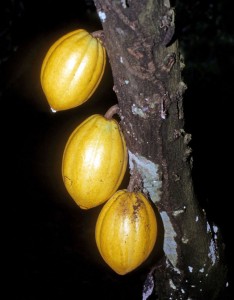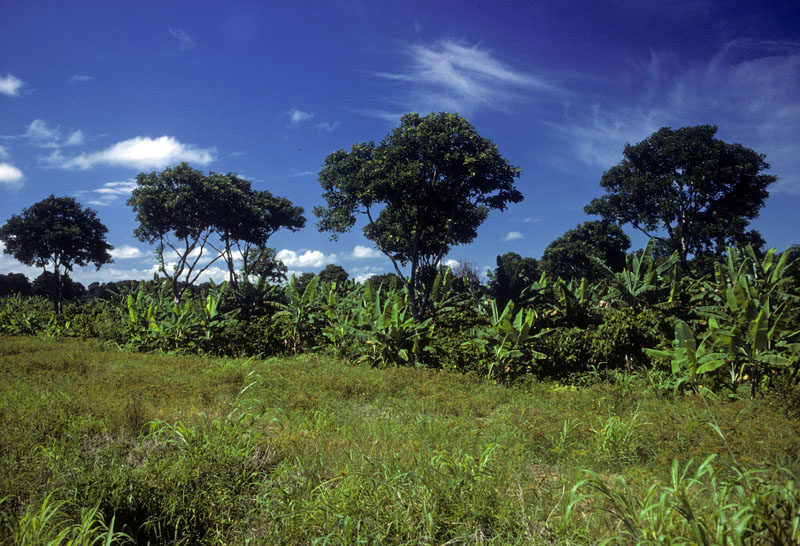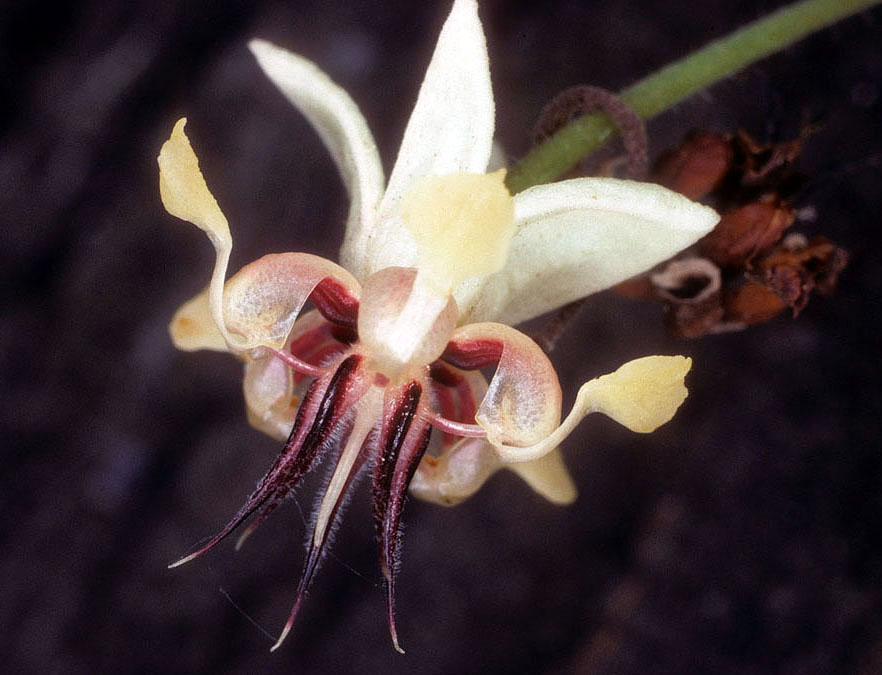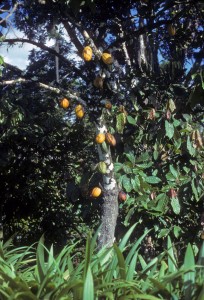For the Love of Chocolate
Posted in Gardens and Collections on February 6 2013, by Scott Mori
Scott A. Mori, Ph.D., Nathaniel Lord Britton Curator of Botany, has been studying New World rain forests at The New York Botanical Garden for 35 years. From 1978 to 1980 he took a leave from the Garden to serve as the Director of the Herbarium of the Cocoa Research Center in Bahia, Brazil.

On a previous blog, I covered the natural history of chocolate but failed to admit my addiction to this melt-in-your-mouth delight. This problem of mine has reached the point where I have asked my wife to hide it from me, and then only dole out small portions on special occasions. Nevertheless, I still scheme to get more chocolate from her. But she has become familiar with my tactics as the years have passed, making extra rations almost impossible to get my hands on.
Of course, chocolate doesn’t begin as the confection we know and love. The fruits of the cacao tree produce two edible treats for humans–the first is the pulp that surrounds the seed and the second is the bitter seed that, after processing, becomes the source of our favorite chocolate. Although the pulp can be made into a delicious juice, I usually open the pods and suck the pulp from the seeds to quench my thirst and boost my energy when I am collecting plants in the field. The pulp is the reward given to monkeys and other animals in exchange for disseminating the seeds, carrying them from the mother tree to a place where they have a better chance to germinate and escape predation. On the other hand, animals do not eat the seeds because they are too bitter.

The seeds are harvested manually by cutting the pods from the tree and then splitting them open. Next, the seeds and the surrounding pulp are extracted and placed into wooden boxes, being left to ferment for three to six days. The fermentation causes the development of the characteristic aroma and flavor of the chocolate, as well as the breakdown of the white pulp surrounding the seeds. The seeds are then dried, either in the sun or in ovens, and the remnants of the pulp are removed.

In the chocolate factory, the beans are roasted to further enhance the flavor, after which the seed husk is broken and blown away in a process called winnowing, leaving only pieces of the embryo known as nibs. The nibs are then ground into chocolate liquor, which is run through a hydraulic press to yield cocoa butter on one side and cocoa powder on the other. Hot chocolate is derived from the cocoa powder, and different kinds of chocolate are produced by using varying combinations of chocolate liquor, cocoa butter, other vegetable oils, and ingredients such as sugar and milk.

Another process, called conching, consists of repeatedly rubbing the chocolate mixtures over corrugated granite, which refines the taste and texture of the chocolate. Unsweetened chocolate is produced from unadulterated chocolate liquor; bittersweet chocolate from chocolate liquor and sugar; white chocolate from cocoa butter and sugar; dark chocolate from chocolate liquor, cocoa butter, and sugar; and milk chocolate from chocolate liquor, cocoa butter, sugar, and milk.
If you’re still looking for the perfect Valentine’s Day date idea, a trip to the Garden where you can linger in the sultry warmth of the Enid A. Haupt Conservatory just might be the ticket. Under the Conservatory’s arches you can enjoy our magnificent display of tropical plants, where, if you keep your eyes peeled, you can see our own cacao tree thriving.


I am so thankful the chemicals that make the seeds of Theobroma cacao toxic to many birds and mammals (don’t let your dog get hold of a chocolate candy!), have no ill-effect on us!